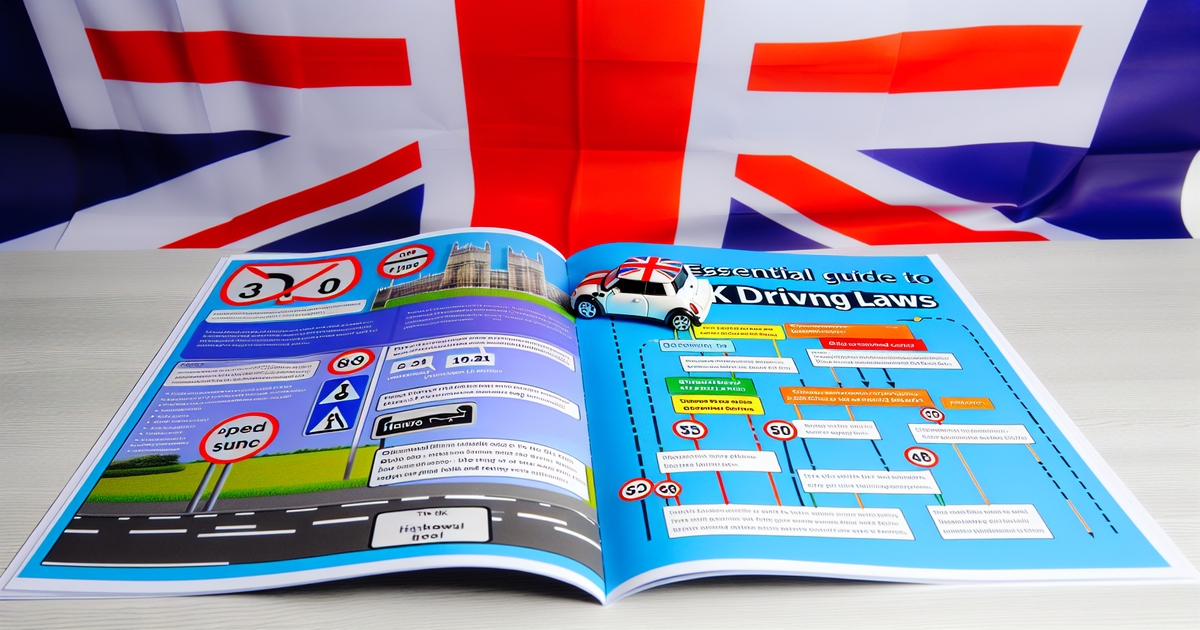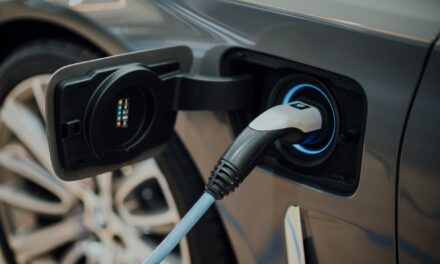Understanding UK driving laws set by the government is crucial for anyone behind the wheel. These laws have evolved over time to ensure safety and order on the roads. They cover everything from speed limits to drink-driving regulations. Knowing these rules can help you avoid fines and accidents. It also ensures that everyone drives responsibly.
Whether you’re a new driver or someone with years of experience, staying updated on these laws is essential. This blog post will guide you through the key aspects of UK driving laws, making it easier to navigate the roads safely and legally.
Key Takeaways
- Familiarise Yourself with Basic Road Rules: Understand and follow essential road rules such as speed limits, right of way, and roundabout navigation to ensure safe driving in the UK.
- Know Your Licence Requirements: Ensure your driving licence is valid and up-to-date. If you’re an international driver, check if you need to exchange your licence or obtain an International Driving Permit.
- Adhere to Parking Regulations: Pay attention to parking signs and restrictions to avoid fines. Use designated parking areas and be aware of controlled parking zones.
- Comply with Traffic Law Enforcement: Be mindful of traffic cameras and police enforcement. Adhering to traffic laws helps avoid penalties and ensures road safety.
- Understand Alcohol Limits: Know the legal alcohol limits for drivers. Avoid driving under the influence to prevent accidents and legal issues.
- Be Aware of Congestion Charges: If driving in central London, understand the congestion charge rules and ensure you pay any required fees to avoid penalties.
UK Driving Laws Overview
The Highway Code
The Highway Code outlines the rules and regulations for driving in the UK. It provides guidelines for all road users, including pedestrians and cyclists.
Drivers must familiarise themselves with road signs, signals, and markings. These signs help maintain order and safety on the roads.
The Code also includes advice on safe and responsible driving. This covers speed limits, seatbelt use, and the importance of not using mobile phones while driving.
Road Safety Importance
Adhering to traffic laws is crucial for road safety. Following these laws helps prevent accidents and ensures a smooth flow of traffic.
Safety measures play a vital role in reducing road fatalities and injuries. Wearing seatbelts, obeying speed limits, and avoiding distractions are key practices.
Promoting awareness about the consequences of reckless driving is essential. Reckless driving can lead to severe penalties, including fines and imprisonment.
Vehicle Rules
Your vehicle must meet UK roadworthiness standards to be legally driven. This includes having a valid MOT certificate if your vehicle is over three years old.
Regularly checking your vehicle’s condition is important. Ensure tyres are properly inflated and have sufficient tread depth. Check that all lights are functioning correctly.
Comply with regulations regarding vehicle modifications and emissions. Some modifications may require approval, while vehicles must meet emission standards to reduce pollution.
Essential Road Rules
Speed Limits
Adhere to speed limits specific to different types of roads. Motorways typically have a maximum speed limit of 70 mph. Dual carriageways also follow this limit. Single carriageways have a limit of 60 mph. In built-up areas, the speed limit is usually 30 mph.
Be aware of speed restrictions for various vehicle categories. For instance, goods vehicles over 7.5 tonnes have lower speed limits on certain roads. They must not exceed 60 mph on motorways and dual carriageways.
Understand the penalties for exceeding speed limits. Fines can range from £100 to £2,500 depending on the severity. Points are added to your licence, leading to disqualification if accumulated.
Seat Belt Use
Wear a seat belt at all times when driving or riding in a vehicle. This rule applies to all passengers regardless of their seating position. Failure to comply can result in fines up to £500.
Ensure children use appropriate child restraints. Children under 12 years old or shorter than 135 cm must use a suitable car seat. These seats should match their weight and height.
Know the legal exemptions for seat belt use. Some medical conditions may exempt individuals from wearing seat belts. A medical certificate must be provided as proof.
Roundabouts Navigation
Yield to traffic coming from the right unless otherwise indicated. This ensures smooth flow and prevents accidents at roundabouts. Always check road signs for any exceptions.
Signal your intentions clearly when entering and exiting. Use your indicators to show other drivers your intended path. This helps avoid confusion and potential collisions.
Stay in the correct lane according to your intended exit. Approach roundabouts in the left lane if taking the first exit or going straight ahead. Use the right lane for exits beyond straight ahead.
Driving Licence Rules
Obtaining a Licence
To drive in the UK, you must meet the minimum age requirement of 17 years. This is the legal age to apply for a provisional driving licence.
You need to pass both the theory and practical driving tests. The theory test includes multiple-choice questions and a hazard perception test. The practical test assesses your driving skills on the road.
If you hold a valid full driving licence from an EC/EEA country or your home country, you may use it in the UK for a limited period. After that, you will need to exchange it for a UK licence.
Licence Renewal
Renewing your driving licence is essential. You must renew it every 10 years. This ensures your photo and details are up-to-date with additional cookies.
If your personal information changes, such as your name or address, update your licence details promptly. Failing to do so can result in fines.
The renewal process requires specific documentation. You need a recent passport-style photo and proof of identity. Ensure all documents are current and accurate to avoid delays.
Points and Penalties
Points on your licence accumulate for traffic violations. Common offences include speeding and using a mobile phone while driving.
Accumulating points can impact your driving privileges. If you reach 12 points within three years, you may face disqualification from driving.
Penalties for reaching the maximum points limit are severe. Disqualification periods vary based on the severity of violations. It can lead to higher insurance premiums and difficulties in obtaining car insurance in the future.
Parking Regulations
Red and Yellow Lines
Drivers must not park or stop on red lines during restricted hours. These restrictions are often in place to ensure traffic flows smoothly. Single and double yellow lines have different rules. Single yellow lines mean no parking during specified times, indicated on nearby signs. Double yellow lines mean no parking at any time.
Violating these restrictions can lead to fines or your vehicle being towed. Ignoring these rules can also result in points on your driving licence. Always check for signs indicating the specific restrictions for that area.
Car Parks
Always park in designated areas within car parks. Each car park has its own set of rules and regulations. These may include speed limits, one-way systems, and specific spaces for disabled drivers.
Pay attention to time limits and parking fees. Many car parks use automated systems to monitor how long vehicles stay. Exceeding the time limit can result in a fine. Make sure to read all signs carefully when entering a car park.
Pay and Display
In pay and display areas, purchase a ticket from the machine and display it on your dashboard. This ticket must be clearly visible to parking attendants. Ensure it is valid for the entire duration of your stay.
Failing to display a valid ticket can lead to penalties. These penalties often include fines, which can be costly. Always double-check that your ticket is visible before leaving your vehicle.
Enforcing Traffic Laws
Traffic Cameras
Traffic cameras monitor speed limits and traffic signals. They help enforce driving laws. Drivers must observe speed limits to avoid fines. Cameras also record red light violations.
Cameras play a crucial role in road safety. They reduce speeding and accidents. Authorities use the footage for evidence in disputes. Knowing camera locations can help drivers stay compliant.
Many areas have fixed cameras. Mobile units are also used. Check local maps or council websites for camera locations.
Police Enforcement
Police officers enforce traffic laws directly. They conduct roadside checks and patrols. Drivers must comply with their instructions at all times.
Always be ready to show your driving licence and vehicle documents. This includes insurance and MOT certificates. Failure to present these documents can result in penalties.
Police maintain road safety by checking for offences like speeding, drink-driving, and using mobile phones while driving. They also respond to accidents and emergencies on the road.
Penalty Charges
Penalty charges apply for various traffic offences. These include speeding, illegal parking, and running red lights. Fines must be paid promptly to avoid additional charges.
If you believe a penalty is unjust, you can dispute it. The process involves submitting evidence to support your case. This might include photographs or witness statements.
Non-payment of fines has serious consequences. It can lead to increased charges, court appearances, and even licence suspension. Always address penalty notices immediately to avoid further issues.
Alcohol Consumption Laws
Legal Limits
Drivers must know the legal limits for alcohol consumption. In England, Wales, and Northern Ireland, the limit is 80 milligrams of alcohol per 100 millilitres of blood. In Scotland, the limit is lower at 50 milligrams per 100 millilitres of blood.
Exceeding these limits results in severe penalties. Fines can be as high as £5,000. Offenders also face driving bans and possible imprisonment.
Other legal limits include vehicle emissions and noise levels. Vehicles must meet specific emission standards to reduce pollution. Noise levels are regulated to minimise disturbances.
Breath Tests
Police officers may request a breath test if they suspect a driver has been drinking. Drivers must comply with these requests. Refusing a breath test is an offence.
The procedure involves blowing into a device that measures alcohol levels. If the test is failed, the driver will be taken to a police station for further testing.
During a breath test, drivers have rights and responsibilities. They should remain calm and cooperate fully with officers. Knowing these rights helps ensure fair treatment.
Penalties for Offences
Penalties for driving offences vary based on severity. Minor offences might result in fines or points on a licence. Serious offences carry heavier penalties.
Imprisonment is possible for serious offences like drink-driving or causing death by dangerous driving. Sentences can range from months to several years.
Accumulating offences has long-term consequences. Insurance premiums increase significantly. Repeat offenders may face extended driving bans or permanent licence revocation.
Congestion Charge Information
Charge Zones
Congestion charge zones are common in major cities like London. These zones aim to reduce traffic and pollution. Drivers must pay a fee to enter these areas during peak hours.
Knowing the requirements is important. The charge usually applies from Monday to Friday, between 7 am and 10 pm. Failure to pay can result in hefty fines.
Certain vehicles may be exempt or eligible for discounts. Electric vehicles often qualify for exemptions. Residents living within the zone may also receive discounts.
Payment Methods
Paying congestion charges promptly is crucial. Use authorised methods to avoid penalties. Payments can be made online, by phone, or at designated shops.
Online payment options are convenient. Ensure you pay before the deadline, usually midnight on the day of travel. Late payments incur additional charges.
Keep records of all payments. This helps resolve any disputes that may arise later. Receipts and confirmation emails serve as proof of payment.
Exemptions and Discounts
e vehicles are exempt from congestion charges. These include emergency services, disabled badge holders, and certain electric vehicles. Check the criteria to see if your vehicle qualifies.
Discounts are available for residents and low-emission vehicles. To apply, fill out the necessary forms and provide required documents. Approval can take several weeks.
The process for obtaining exemptions and discounts involves registration with the relevant authority. Once approved, use your exemption responsibly to avoid fines.
Closing Thoughts
Understanding UK driving laws is crucial for your safety and compliance on the road. By familiarising yourselves with these regulations, you ensure smoother journeys and avoid penalties. Remember, knowledge is your best ally behind the wheel.
Stay updated with any changes in the law to remain a responsible driver. Share this guide with friends and family to promote safer driving habits. Drive smart, stay safe, and make the roads a better place for everyone.
Frequently Asked Questions
What are the basic UK driving laws every driver should know?
Drivers must follow speed limits, wear seat belts, and avoid using mobile phones. Drink-driving is strictly prohibited.
How can I obtain a UK driving licence?
Apply for a provisional licence, pass the theory test, and then the practical driving test.
What are the rules for parking in the UK?
Follow local signs and markings. Avoid double yellow lines and ensure you pay where necessary.
How are traffic laws enforced in the UK?
Traffic laws are enforced by police officers and automated systems like speed cameras.
What is the legal alcohol limit for drivers in the UK?
The limit is 80mg of alcohol per 100ml of blood in England, Wales, and Northern Ireland; 50mg in Scotland.
How does the Congestion Charge work in London?
Pay a daily fee to drive within designated zones during peak hours. Check online for details.
Are there penalties for breaking UK driving laws?
Yes, penalties include fines, points on your licence, or even disqualification from driving.





